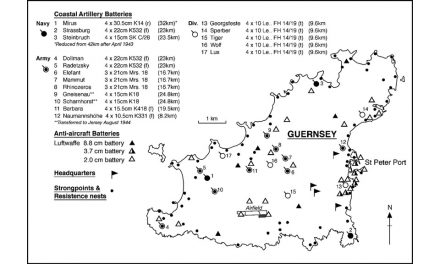Guernsey folklore possesses a rich set of ancient cures and remedies for various ailments intermingled with many superstitious tales.
ANCIENT GUERNSEY REMEDIES
Before the introduction of modern pharmaceuticals, plants and herbs were vital in times of illness. Many of the active ingredients in modern drugs such as Aspirin, Morphine and Vincristin were originally derived from plants. During the 19th century Guernsey folk recommended the following herbs to be grown : Rosemary, Comfrey, French Lavender, Sage, Marjoram, Greeen Hellebore, Rue, Wormwood and Vervain. All very good in their own right to treat all manner of ailments suffered by islanders and their animals. However what was rather unusual is that it was believed that to ensure the herbs were potent and in order to ward off evil they must to be planted whilst uttering a shower of expletives!
An old Guernsey remedy for sore throats was to wrap a thick woolen sock around one’s neck before going to bed. However the key ingredient here seems to have been that the socks had to have been worn all day and so would be heavy with sweat! The old folk seemed adamant that it had to be a used sock to get best results.
Islanders believed that people who suffered from skin complaints like boils could be healed through the use of brambles. Specifically the thorns of the bramble plant could ‘scrape off’ the ailment from the skin of the patient. This ‘cure’ had to be undertaken under the guidance of a désorchéleur (a white witch). The patient had to pass their afflicted limb through a wreath of bramble runners 9 times each day, for 9 consecutive days, whilst fasting. It was likely that the désorchéleur may well have also uttered an incantation at the same time.
ANCIENT GUERNSEY SUPERSTITIONS
Superstition mixes history, fact, fantasy, science and ignorance. Our ancestors lived off the land and sea so naturally their lives were linked to the natural environment as such many local superstitions relate to the world around us.
Islanders had a profound belief in the supernatural, strongly linked to the numerous sites across the island that survive from as far back as the Neolithic period.
Friday has often been regarded as the most dangerous day of the week, This was partly due to the belief that Jesus was crucified on a Friday, However, it was also because Friday night was the time when Witches were believed to travel to their Sabbat meetings at places like Le Catioroc. As a consequence it was thought back luck to begin any kind of new venture, cut your hair or your nails, wear new clothes or start using a new tool on a Friday!
A Guernsey fisherman would always say “J’m’en vais au bate” or “I am going to my boat”. But he will never say “J’m’en vais au paissaön” which means ” I am going fishing”. This is because it was feared that the fish might hear him and hide, and then he wouldn’t catch anything!
Those of the superstitious reach a paid careful attention to the flames used in lighting their houses …
![]() White/yellow flame
White/yellow flame
The flame burning white/yellow is the normal colour, expected from candles and oil lights.
![]() Green flame
Green flame
If the flame burned green then it meant that witches where about or dark magic was in use.
![]() Blue flame
Blue flame
If the flame burned blue then it meant that a storm was on the way.
The traditional beehive was made of woven coils of straw and was called the ‘skep’. Many homes in the county parishes had one. Bees pollinated the fruit trees and crops and were much valued. The honey they made was a welcome addition to a country family’s often meagre diet. Ut was a long held belief that the bees had to be informed of any important family occurences. If a family member died then someone had to tell the bees the news. In fact it was not uncommon for a black ribbon to the tied around a hive to mark the death.
One belief held by the old fishermen is linked to the mighty rocks off Jerbourg Point on the south east corner of the island. The rocks are known as ‘Les Tas de Pois d’Amont’ or The Pea Stacks of the East. On the top of one of these there is a weather-shaped rock which looks like an old figure in a cloak and cowl when seen from a certain angle.
This ‘figure’ was known by local seafarers as Le Petit Bon-Homme Andriou or The little Fellow Andriou. Fishermen sailing past the rocks would take their hats off in respect and might throw an old garment into the water as an offering. It was not unusual for these men to offer a biscuit or splash of cider to ‘Le Bon-Homme’ before leaving harbour. This was hoped to bring them good luck at sea.





